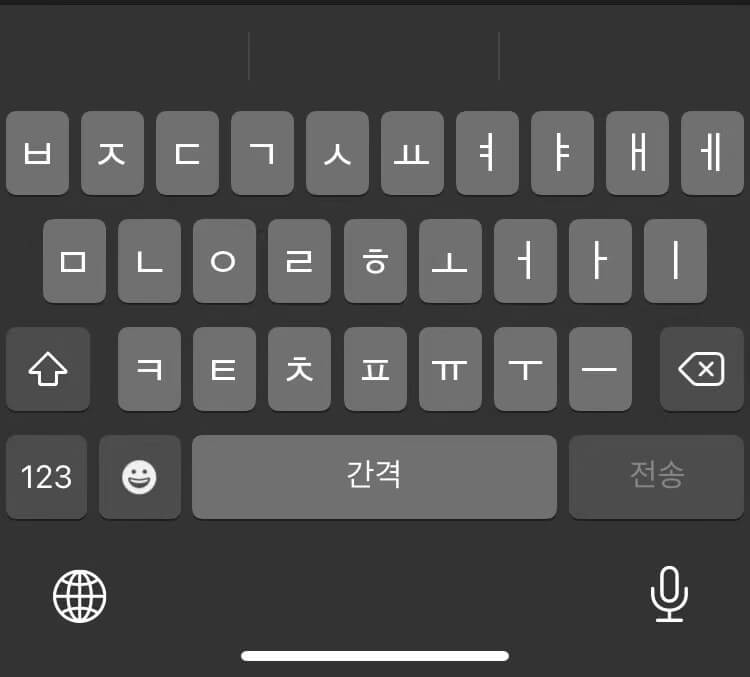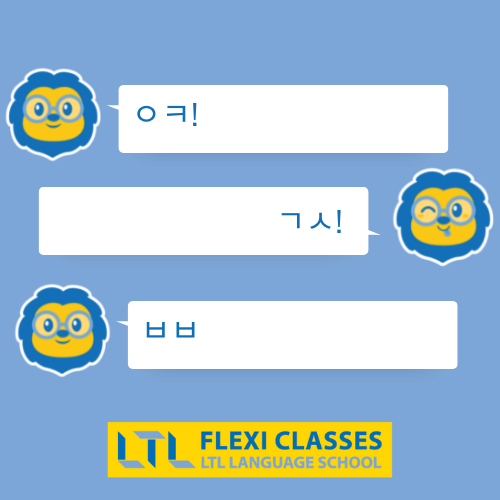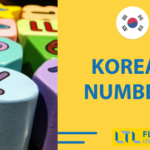Korean Texting (for 2025) // 47 Slang Terms for Texting From ㅋㅋ to ㄱㅅ
Korean Texting 📱 Ultimate Guide for Beginners

Just made friends online and need to learn more about Korean Texting?
Did someone text you “ㄱㅅ”, “ㅇㅇ”, or even “OTL” and you have no idea what that means?
You’re in the right place!
Here you’ll learn more about how to text with a Korean keyboard, what abbreviations and slang you should use, and we’ll even review your Hangul skills.
As newcomers in the Korean language community, learning how to type in Korean can be kind of overwhelming as it involves a completely different alphabet, but we’ve got your back!
Jump to the section you’d like to more about, and make sure to check out our Flexi Classes for a 7 Day Free Trial of our Online Korean Courses if you haven’t signed up already.
Korean Texting | Korean Alphabet Review
Korean Texting | Using a Korean Keyboard
Korean Texting | Text Slangs
Korean Texting | Number Slangs
Korean Texting | Emoticons
Korean Texting | Hangul Review
First things first.
You won’t be able to text in Korean if you don’t know about Hangul!
Here’s a quick recap of the Korean Alphabet, if you’re already a master of Hangul, you can directly skip to the next chapter.
Are you just starting out with Korean?
Check out the Full Guide to Hangul here, and learn how to read the Korean alphabet step by step.
Now, for the Hangul recap:
| Hangul | Sound | Example Word | English |
|---|---|---|---|
| ㄱ | g/k | 가방 (ka bang) | Bag |
| ㄴ | n | 노래 (no rae) | Song |
| ㄷ | d/t | 대한민국 (dae han min gug) | South Korea |
| ㄹ | l/r | 라면 (ra myeon) | Ramen |
| ㅁ | m | 엄마 (eom ma) | Mum |
| ㅂ | p/b | 밥 (bap) | Banana |
| ㅅ | s | 사과 (sa gwa) | Apple |
| ㅇ | silent “ng” | 방 (bang) | Room |
| ㅈ | j | 지도 (ji do) | Map |
| ㅊ | ch | 친구 (chin gu) | Friend |
| ㅋ | k | 커피 (ko pi) | Coffee |
| ㅌ | t | 토마토 (to ma to) | Tomato |
| ㅍ | p | 팔 (pal) | Arm |
| ㅎ | h | 하늘 (ha neul) | Sky |
| ㅏ | a | 차 (cha) | Car |
| ㅑ | ya | 약속 (yak sok) | Promise |
| ㅓ | eo | 버스 (bo sseu) | Bus |
| ㅕ | yeo | 여자 (yo ja) | Woman |
| ㅗ | o | 봄 (bom) | Spring |
| ㅛ | yo | 요리사 (yo li sa) | Cook/Chef |
| ㅜ | u | 문 (mun) | Door |
| ㅠ | yu | 휴가 (hyu ga) | Holidays |
| ㅡ | eu | 아이스크림 (ah e seu keu lim) | Ice Cream |
| ㅣ | i | 아이 (a i) | Child |
| ㄲ | kk | 꿀 (kkul) | Honey |
| ㄸ | tt | 딸 (ddal) | Daughter |
| ㅃ | pp | 아빠 (appa) | Dad |
| ㅆ | ss | 쑥 (ssuk) | Mugwort (Korean Plant) |
| ㅉ | ts | 짜장면 (jja jang myeon) | Black Bean Noodles |
| ㅐ | ae | 개미 (kae mi) | Ant |
| ㅒ | yae | 얘기 (yae gi) | Story |
| ㅔ | e | 가게 (ka ge) | Store |
| ㅖ | ye | 시계 (si gye) | Watch |
| ㅘ | wa | 사과 (sa gwa) | Apple |
| ㅙ | wae | 돼지 (dwae ji) | Pork |
| ㅚ | oe | 괴물 (goe mul) | Monster |
| ㅝ | weo | 고마워 (go ma weo) | Thank You |
| ㅞ | wae | 외삼촌 (oe sam chon) | Uncle |
| ㅟ | wi | 귀 (gwi) | Ear |
| ㅢ | ui | 의사 (ui sa) | Doctor |
Then to complete the line-up the Complex Consonants:
- ㄳ gs [g] – We only pronounce the [g] sound
- ㄵ nj [nj] – We pronounce it as [nj]
- ㄶ nh [nh] – We pronounce it as [nh]
- ㄺ lg [g] – We only pronounce the [g] sound
- ㄻ lm [m] – We only pronounce the [m] sound
- ㄼ lb [b] – We only pronounce the [b] sound
- ㄽ ls [s] – We only pronounce the [s] sound
- ㄾ lt [t] – We only pronounce the [t] sound
- ㄿ lp [p] – We only pronounce the [p] sound
- ㅀ lh [h] – We only pronounce the [h] sound
- ㅄ ps [p] – We only pronounce the [p] sound

The Korean Alphabet | A Complete and Definitive Guide to Hangul 한글
Learning Korean? Need to understand the Korean Alphabet? This complete guide will tell you everything about the 14 consonant letters and 10 vowels of Hangul
Korean Texting | Using a Korean Keyboard
Let’s start with the serious stuff.

We’re not going to lie to you, learning how to use a Korean keyboard is not the easiest thing to do, but it’s not the hardest either.
Do you remember when you first started using a laptop and had to look for each letters to type?
It will be the same thing with a Korean keyboard, you’ll need some time to get used to it and learn the placement of each letter.
The simple thing about the Korean keyboard is that all you do is select the consonant and vowel you want using simply the corresponding keys.
The difficult thing is that the corresponding keys are in entirely different positions to a normal QWERTY keyboard.
However, it does kind of make sense once you look at the positioning of the vowels and consonants, so it makes it pretty simple to get used to…
After you’ve got used to it (further tips here) you just need to memorise where the punctuation is too.
From then on, it’s pretty simple!
WANT MORE? | Check out our Full Guide to the Korean Keyboard here for more details about keyboards for Windows & IOS, as well as tips and tricks to make it an easier process for you!
List of Korean Text Slang
Now the fun part!
This is probably the part you’ve been looking for from the beginning!
Here’s a list of Korean Text Slang used daily in South Korea, with explanations when needed.
Let us know in the comments if you already knew some of them!
Make sure to check the explanations of each slang term below to also get their variations.
| Slang | Full word | Meaning |
|---|---|---|
| ㅋㅋ | 크크 | LOL |
| ㅎㅎㅎ | 하하하 | Hahaha / hihihi |
| ㅍㅎㅎ | 푸하하 | LMAO |
| ㅉㅉ | 쯧쯧 | Tsk, tsk |
| ㅇㅇ | 응 | Yes |
| ㅇㅈ | 인정 | Agreed |
| ㅇㅋ | 오케이 | OK |
| ㅇㅋㄷㅋ | 오키도키 | Okey-dokey |
| ㄴㄴ | 노노 | No |
| ㅈㅅ | 죄송 | Sorry |
| ㄱㅅ | 감사 | Thanks |
| ㅎㅇ | 하이 | Hi |
| ㅂㅂ | 바이바이 | Bye bye |
| ㄱㄱ | 고고 | Let’s go |
| ㅊㅋ | 축하해요 | Congrats |
| ㅅㅇㅊㅋ | 생일축하해 | Happy birthday |
| ㄱ ㅊ | 괜찮아 | It’s ok |
| ㅅㄱ | 수고하세요 | Good work |
| ㅇ ㄷ | 어디 | Where |
| 어케 | 어떻게 | How |
| ㅇ? | 왜? | Why |
| ㅁㄹ | 몰라 | IDK |
| ㄹㄷ | 레디 | Ready |
| ㅇㄴ | 인남 | Waking up |
| ㅁㅊ | 미친 | Crazy |
| ㅎㄹ | 헐 | What the.. |
| ㄷㄷ | 덜덜 | Expresses fear |
| ㅅㅂ | 시발 | F!ck |
| ㄲㅈ | 꺼져 | Go away |
| ㄷㅊ | 닥쳐 | Shut up |
| ㄷㅈㄹ | 뒤질래 | Wanna die? |
ㅋㅋ (sound of laughter)
This slang comes from 크크 (kuh-kuh).
The English equivalent would be “LOL” or “hahaha”.
You can add as many ㅋ as you’d like, know that the more ㅋ there are, the funnier you find the situation or joke.
ㅎㅎㅎ (hahaha)

This slang comes from 하하하 (ha-ha-ha) or 히히히 (hi-hi-hi).
It is pretty much the same as ㅋㅋ, but perhaps indicates a softer tone, or laugh.
Again, you can add as many ㅎ you’d like, knowing that the more you include, the funnier you think the conversation is.
ㅍㅎㅎ (puhaha)
This slang comes from the sound of laughing out loud 푸하하, which is stronger than ㅋㅋ and ㅎㅎ.
It shows a genuine reaction to something you find extremely funny, like LMAO in English.
ㅉㅉ (tsk tsk)
This slang is short for 쯧쯧 (jjeutjjeut) meaning “tsk tsk”.
It is used to express disapproval or annoyance over something that just happened, or that someone did.
ㅇㅇ (yes)
ㅇㅇ is the abbreviated version of 응 (to pronounce “eung”, which is an informal way of saying “yes.”
네 is another informal, but more proper way to say Yes in Korean.
The use of ㅇㅇ is even more informal and sounds friendlier.
ㅇㅋ (OK)
This slang comes from the English work OK, which is written 오케이 (o-keh-e) in Korean.
ㅇㅋ is taken from the first two syllables of the transliterated word, and means the same thing in English.
Easy!
ㅇㅈ (agreed)
ㅇㅈ is very similar in meaning to ㅇㅋ and ㅇㅇ but is used in a different context.
ㅇㅈ comes from 인정 (in-jeong), which literally means to admit, to recognise. It is then used to agree with someone else’s statement.
It can also be used as a question “ㅇㅈ?” to ask the approval, agreement of someone.
ㅇㅋㄷㅋ (okey-dokey)
ㅇㅋㄷㅋ or in full letters, 오키도키 (o-ki-do-ki) is the cute version of ㅇㅋ.
ㄴㄴ (no no)
This slang comes from 노노 (no-no), which is a transliteration of the English words “no no.”
It simply means no, and negates a statement.
ㅈㅅ (sorry)
ㅈㅅ is short for 죄송 (joesong) which means “sorry”.
This is a very informal way to apologise for something.
The proper, and more formal way would be 죄송합니다 (formal high) or 죄송해요 (informal high).
ㄱㅅ (thanks)

This slang comes 감사 (gahm-sa), this is an informal way of saying thank you.
The full word and more formal way to thank someone is 감사합니다 (formal high) or 고마워요 (informal).
BONUS || There is a ‘cute version’ for saying thanks: 고마웡 (go-ma-woong). Add “~” behind to emphasise the cuteness, as it is read as if you were dragging the last sound.
ㅎㅇ (hi)
This slang comes from the transliteration of the English word “Hi”, 하이 (ha-ee) in Korean.
A nice and short way to greet your friends!
ㅂㅂ/ㅃㅃ (bye-bye)
This slang comes from the transliteration of “Bye-bye” in Korean, 바이바이 (ba-ee ba-ee), with the cuter version 빠이빠이 (ppai-ppai).
Other variations you can use:
- ㅂㅇ
- ㅂㅇㅂㅇ
- ㅂㅂ
- ㅂ2ㅂ2
- ㅂ2
Why two, you might ask?
“이” also means “two” in Korean so people just replace this syllable with the number!
End your conversation with either one of these slang words next time!

Korean Numbers // Discover the Two Numbering Systems Used (with Quiz)
There are two numbering systems in Korean. Native and Sino-Korean numbers. Both are not used in the same instances. We’ll teach you when to use them.
ㄱㄱ (let’s go)
This slang comes from 고고 (go-go), which is a way to nudge someone to get out or do something.
ㅊㅋ (congrats)

This slang comes from 축하해요 (chuk-ha-hae-yo), which means “Congratulations”.
축하 is another informal and common way to congratulate friends on something, which leads us to the following slang variation:
- ㅊㅋㅊㅋ, which short for 축하축하! (chukachuka). Don’t forget to use it with an exclamation mark!
ㅅㅇㅊㅋ (happy birthday)
ㅅㅇㅊㅋ comes from “생일축하해” (saeng-il-chuk-ha-hae), meaning “Happy Birthday” in Korean.
A variation of this Korean text slang you can use is 생일ㅊㅋ.

Happy Birthday in Korean || PLUS Korean Age System Explained
Little did you know, there exist many Korean birthday traditions. And were you aware that Korean people do not age on their birthday? Intriguing!
ㄱㅊ (it’s ok)
This slang comes from 괜찮아 (kwaen-chan-a), meaning “It’s ok” in Korean.
It is similar to the way you would use “k” to respond to someone in English.
ㅅㄱ (good work)
This slang comes from 수고하세요 (su-go-ha-se-yo), which means “Good work” in English.
It is commonly used with friends or colleagues at the end of a work day.
ㅁㄹ (I don’t know)
This slang comes from 몰라 (mol-la), which means “I don’t know”.
In English the equivalent would be “idk”, short for I don’t know.
ㄹㄷ (ready)
This slang comes from the transliteration of “Ready” in Korean, 레디 (redi).
It is usually used to ask the other person if they are ready to go, or do something.
ㅇㄷ (where)
This slang comes from 어디 (eo-di), meaning “Where” in English.
It is used to ask the other person where they are, or where is something.
ㅇ? (why?)
This slang is the short form of 왜?, which means “Why?” in English.
It’s that simple.
어케 (How)
어케 is the short version of 어떻게 (eotteoke).
It means “How” in English.
ㅇㄴ (waking up)
This slang comes from the word 인남 (innam), which is itself an abbreviation for 일어나다 (ireonada), the verb for “To wake up”.
It is used to express the fact we just woke up, and perhaps explain why we took so long to text back!
ㅁㅊ (crazy)
ㅁㅊ is short for 미친 (michin), which means “Crazy” in English.
It is used when the other person speaking says something that doesn’t make any sense or is exaggerated.
잼게 (have fun)
Another abbreviated word! This one comes from 재미있게 (jae-mi-it-ge), meaning “Having fun” in English.
This one has an actual antonym: 노잼, meaning “no fun”.

BTS Seoul Tour || 22 Places ARMYs Must Visit (in 2025)
Make the most of your trip to South Korea and start your BTS Seoul Tour with our list of places to visit! All maps are included for your convenience.
헉! (OMG)
This slang, 헉 (huk) comes from the sound one makes when surprised or shocked about something.
The English slang OMG would be the best equivalent, it can also convey the feeling of “no way” or “wow!”.
ㅎㄹ (What the..)
ㅎㄹ is short for 헐 (heol), which is an expression of disappointment or surprise.
The meaning is similar to 헉! .
ㄷㄷ (expression of fear)
This slang comes from 덜덜 (deol-deol), meaning “shivering”.
It is used to express fear or shock, something that might give you the creeps.
ㅇㅈㄴ / OTL (defeated)
This slang is a special one, as it is not a word but rather an emoticon.
The shape of the letters, both Korean or Latin, represent a kneeling person!
- The head (ㅇ or O) is down
- The torso and arms to the ground (ㅈ or T)
- The legs are bent kneeling (ㄴ or N)
Using this slang expresses a sense of defeat and disappointment, in a big way.
WANT MORE? | Check the next chapter for more emoticons.

BONUS // SWEAR WORDS
We cannot finish this chapter without mentioning a couple Korean swear words for texting!
- ㅅㅂ = 시발 (f!ck)
- ㄲㅈ = 꺼져 (go away)
- ㄷㅊ = 닥쳐 (shut up)
- ㄷㅈㄹ = 뒤질래 (wanna die?)
- ㅗ = looks like a middle finger
- ㅗ ㅗ = two middle fingers
Be mindful when using these though of course…
Korean Number Slang
Many languages across the world use this kind of text code, so it is not surprising the same is true in Korean.
Try to use these next time you text a friend:
| Number Slang | Meaning | Original | Explanations |
|---|---|---|---|
| 하2 | Hi | 하이 | 하 is pronounced “ha” 2 is 이 “ee” in Korean |
| 감4 | Thank you | 감사 | 4 is pronounced 사 in Korean |
| 바2 | Bye | 바이 | 바 is pronounced “ba” 2 is 이 “ee” in Korean |
| 밥5 | Stupid | 바보 | 바 is pronounced “ba” 5 is 오 (o) in Korean |
| 미5 | I hate you | 미워 | 미 is pronounced “mi” 5 is 오 (o) in Korean |
| 700 | Cute | 귀여워 | Looks like ㄱㅇㅇ, which is short for 귀여워 (gwi-yeo-wo), cute |
| 1004 | Angel | 천사 | 1000 is 천 (cheon) 4 is 사 (sa) four |
| 8282 | Do it quickly | 빨리빨리 | 8 is 팔 (pal) 2 is 이 (i) |
| 10C미 | Diligently | 열심히 | 10 is 열 (yeol) C is pronounced 씨 미 is pronounced mi |
| 091012 | Study hard | 공부 열심히 해 | 0 is 공 (gong) 9 is 구 (gu) 10 is 열 (yeol) 12 is 십이 (sibi) |
It’s not just Korean as we mentioned above. Fancy learning more? Check out these Chinese Number Slang terms.
Korean Emoticons
Ever seen these super cute faces made with Hangul letters?
They are called emoticons, and are a fantastic way to express your feelings, just like you would do with emojis.
There are a LOT of them, so we chose to list only those that include Korean letters.
Smiling Faces
Let’s start with the happy ones first! All of these emoticons can be created with the Korean keyboard.
- ^ㅇ^
- ^ㅂ^
- ‘ㅂ’
- (^ㅇ^)
- *(^ㅇ^)*
Crying Eyes
The vowels ㅠ (yu) and ㅜ (u) looks like a closed eyelid with tears streaming, it is easy to use them to express sadness.
- ㅠㅠ
- ㅜㅜ
- ㅠ_ㅠ
- ㅜ_ㅜ
- ㅜ.ㅜ
- ;ㅅ;
Shocked Faces
As you’ll have seen we have a square and a circle shaped letter in the Hangul Alphabet. Creating faces with them is simple!
These Korean emoticons express shock, amazement or surprise:
- ㅇㅁㅇ
- ㅇㅅㅇ
- ㅁㅅㅁ
Disgusted Face
This is an all time favourite, the disgusted/vomiting face.
We’ve seen the ㅠ (yu) letter can represent a closed eyelid with tears, but how about a drooling mouth?!
You’ll see it better like this:
0ㅠ0
Remember OTL from before? The person kneeling face down? Here he is vomiting as well:
요TL
Once you see it, you cannot unsee it.
And we come to the end of our article about Korean Texting and Korean Text Slang, you are now all set to start typing Korean to your friends!
Make sure to check out our Korean Courses to speed up your progress:
- Korean Courses in Seoul (+ Homestays available)
- Online Korean Courses
FAQs
How do you text in Korean?
Korean texting is not all that different from other countries.
The goal being to convey your message in the shortest way possible. This involves text slang of course!
Korean Text Slang are words you already know, but written in a shorter form or with letters only.
Some examples:
ㅋㅋ (kk) is a laughing sound
ㅇㅋ means ok, and comes from 오케이
ㅈㅅ means sorry, and comes from 죄송
ㄱㅅ means thank you, and comes from 감사
What are some examples of Korean Text Slang?
The most common Korean text slang you’ll encounter:
ㅋㅋ (kk) is a laughing sound
ㅇㅋ means ok, and comes from 오케이
ㅈㅅ means sorry, and comes from 죄송
ㄱㅅ means thank you, and comes from 감사
ㅊㅋ means congrats, and comes from 축하해요
ㅇ? means why?, and comes from 왜?
Make sure to check out our list for many more Korean slang.
What is the most used Korean messaging app?
Koreans usually all use Kakaotalk to text each other.
Download on the Google Play Store.
Download on the Apple Store.
What does ㅠ mean in Korean texting?
The letter ㅠ alone in Korean texting means to cry.
Indeed, the vowels ㅠ (yu) and ㅜ (u) looks like a closed eyelid with tears streaming, it is easy to use them to express sadness.
What is the equivalent of LOL in Korean texting?
The equivalent of LOL in Korean text slang would be ㅋㅋ.
Add as many ㅋ as you want the funnier you think something is.
What does 700 mean in Korean texting?
700 looks like ㄱㅇㅇ, which is short for 귀여워 (gwi-yeo-wo), meaning “cute”.
Koreans use many number slangs, such as 8282 (do it quickly) or 091012 (study hard).
Want More From LTL?
FANCY LEARNING KOREAN? Check out our online Korean courses here.
We offer a 7-day free trial to all online students where you can study Korean 24/7.
Want to study Korean in Korea instead? Our Korean courses in Seoul can either be taken in small groups of no more than 5 students or individually for a more tailored experience.
We even offer incredible homestay experiences in Seoul too.
To top it all off, it certainly doesn’t end with Korean. Check out the other languages we teach 👇🏻









1 comments
[…] escreveu quis dizer, nós te explicaremos agora! ㅋㅋㅋ, por exemplo, representa o som de uma risada, igual ao nosso “kkkk”, enquanto ㅎㅎㅎ é a risada um pouco mais contida “hahaha”. […]